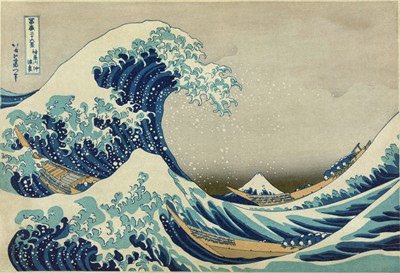
To see the previous installments, click on the following links: #1, #2, #3, #4, #5, #6, #7, #8, #9, #10, #11, #12, #13, #14
I find myself sitting on the floor of my cell. My back is against the cold stone wall and my gaze is lost in nothingness. My mind is a whirlwind of thoughts, a tide of memories and forebodings that won't let me rest. I am waiting for the irremediable…
I remember my childhood in Coria del Río, the carefree days by the Guadalquivir river, the scent of orange blossom floating in the air, the warmth of my mother's voices, calling my name. I remember the feeling of the Andalusian sun on my skin before embarking on a journey of no return... Then, I remember arriving in Japan... and encountering the rigidity of my samurai upbringing, the discipline forged through effort and loyalty. Here, I learned bushidō and swore my sword to the Date clan.
But now everything hangs in the balance.
In the gloom of my cell, I recall the face of Aoi Takasugi, the craftswoman whose skill with porcelain is matched only by the steadfastness of her spirit. I remember her bent over her work, her fine, sure hands tracing delicate brushstrokes on the ceramics. Despite her condition, her apparent fragility, she behaved in court with the dignity of a warrior. She betrayed no one, she sought no excuses or indulgences. She accepted his fate with the same determination with which she moulded the clay, without breaking, without giving in.
Meanwhile, the court is deliberating my fate. I know what happens to those who are accused of heresy or disloyalty. Seppuku seems inevitable, but what pains me most was not my own death, but the knowledge that I have been a piece in a larger game, a pawn sacrificed in a conspiracy whose true target is the Date clan.
To be continued
Header Image:
The Great Wave of Kanagawa (1830 - 1833), engraving by Katsushika Hokusai, Metropolitan Museum of Art, New York.
Will Aoi be freed? I'm looking forward to reading more to find out what will happen to Rodrigo. I just hope he avoids seppuku. And the conspiracy also intrigues me.
@druida.Enlazando con tu anterior post. Esta pieza es la que siempre me pone la carne de gallina. https://www.youtube.com/watch?v=kn1gcjuhlhg
¡Espectacular! @Coral .Es de un sentimiento tan profundo que no sabes describirlo. Yo, poco a poco, estoy aprendiendo violín. Es mi tercer año, y así como a lo largo de mi vida, la música ha sido una cosa marginal; ahora, estoy de lleno en lenguaje musical, pentagramas, etc. y tengo la sensación de haberme perdido algo muy importante. Muchas gracias por compartirlo.
Nunca es tarde para empezar algo que disfrutas, @druida, ya sea el violín o cualquier otra cosa. Si estás tan metido en ello y no la conoces, creo que la historia de Paganini te va a flipar. Además podría estar en la línea de las historias que tú escribes aquí. Es una mezcla de talento pasión y locura, pero mejor no te hago espóiler. :D
Qué belleza de pieza, Dios. Druida, te cuento que yo soy violinista desde la niñez. A veces digo que el inglés y el violín son dos cosas que me alegro de no haber tenido que aprender como adulto. Te felicito! Cual es tu pieza favorita de tocar. La mía de toda la vida es Le Cygne (El cisne) de Saint-Saënz. Muy fácil de aprender, pero te tomará años aprender a interpretarla porque requiere mucha técnica, control y emoción. Esta es mi interpretación preferida — perfecta en mi opinión: https://www.youtube.com/watch?v=CZDyiRQvDis Yo-yo Ma se hizo famoso tocando esta pieza en el violonchelo: https://www.youtube.com/watch?v=3qrKjywjo7Q Y aquí tienen al mismísimo Hauser tocándola (un poco apuradito para mi gusto) https://www.youtube.com/watch?v=-OjCEwhtSuU
Hola Uly ( @CocoPop ). La música me ha tocado un poco más tarde que a tí. Ahora llevo unos tres años practicando el violín, más o menos. En la escuela a la que voy, además de estudiar, participo en una orquesta de cuerda y, para rematar, canto en el coro y en la cuerda de "bajos", etc. Mis gustos musicales, además de emocionarme como a un niño, van desde piezas clásicas (Canon en Re mayor de Pachelbel: https://www.youtube.com/watch?v=OFfYGoVstgc ) a algo parecido a un "flashmob" con el Bolero de Ravel ( https://www.youtube.com/watch?v=UcCsf77JdrU ). Tampoco puedo olvidarme de mis raíces musicales hispanas con el tango (https://www.youtube.com/watch?v=bRh-XeMzM-4 ) y tampoco de la nostalgia de las melodías irlandesas ( https://www.youtube.com/watch?v=YcetrRFBySg ). Y por último y con mucha emoción, tengo que decir que la mejor música es la que sale de nuestra voz y aquí va un ejemplo con Eric Whitacre's Virtual Choir 6: Sing Gently (https://www.youtube.com/watch?v=InULYfJHKI0) Y eso es todo por ahora. Muchas gracias por compartir aficiones musicales, Uly.
Por lo que he leído por ahora de Paganini es, como dices, para flipar @Coral . Ya solo con el apodo de "violinista del diablo" tiene bastante. Seguiremos hablando de él. Muchas gracias.
@druida, No hay de qué. Espero que te guste mucho.